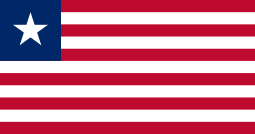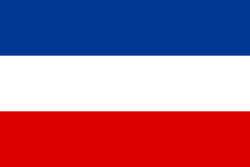vz. 24
| Vz. 24 | |
|---|---|
 | |
| Type | Bolt-action rifle |
| Place of origin | Czechoslovakia |
| Service history | |
| Used by | See Users |
| Wars |
Constitutionalist Revolution Chaco War Ecuadorian–Peruvian War Spanish Civil War Second Sino-Japanese War World War II Chinese Civil War 1948 Arab–Israeli War and others |
| Production history | |
| Designed | 1924 |
| Manufacturer | Zbrojovka Brno |
| Produced | 1924–1942 |
| Specifications | |
| Weight | 4.2 kg (9.3 lb) |
| Length | 1,100 mm (43 in) |
| Barrel length | 590 mm (23 in) |
|
| |
| Cartridge | 8×57mm IS, 7×57mm Mauser, 7.65×53mm Argentine |
| Action | Bolt-action |
| Rate of fire | 10–15 rpm |
| Muzzle velocity | 760 m/s (2,493 ft/s) |
| Feed system | 5-round internal box magazine, two-row, integral box, with quickly detachable floorplate |
| Sights | Iron sights |
The vz. 24 rifle is a bolt-action carbine designed and produced in Czechoslovakia from 1924 to 1942. It was developed from the Mauser Gewehr 98 line, and features a very similar bolt design. The rifle was designed in Czechoslovakia shortly after World War I, to replace the Vz. 98/22, featuring a 600 mm (23.6") barrel which was shorter and considered more handy than the 150 mm (5.9") -longer Gewehr 98. The carbine followed a similar trend in weapon design at the time, that a short rifle gave away little in ballistic efficiency at combat ranges, but was easier to handle on account of its shorter length.
During World War II, the vz. 24 was produced for the German armed forces during its occupation. The rifle was also produced in nearby Slovakia, a German ally and puppet state during the war.
The vz. 24 rifle was widely exported and enjoyed usage during and after World War 2, noticeably by Romania, the Imperial State of Persia, Guatemala, China and others. Many of the contract rifles made for South American countries were chambered in 7mm Mauser or 7.65×53mm Argentine.
Development
After World War I, the Austro-Hungarian Empire was dismantled; one of the new states to emerge from the ruins of the Habsburg Monarchy was Czechoslovakia. The new state received control of the Skoda factory in Brno, which was renamed the Brno Arms Works in November 1918. The following year, the factory began producing the first short rifles based on the German Gewehr 98 design, which were chambered in 7mm Mauser. In 1922, the long vz. 98/22 was developed; this provided the basis for the vz. 23, a shortened version. These rifles were initially produced with parts cannibalized from other rifles. The design was further refined into the vz. 23A, which consisted of newly manufactured components. Further refinements produced the vz. 24, which entered production in 1924.[1]
The vz.24 became the primary rifle of the Czechoslovak armed forces before World War II. It resembled the German Karabiner 98k, which it predated by more than a decade. Unlike the K98k, the vz. 24 has a longer top handguard, and it retains a straight bolt handle.[2]
Export and combat employment
Between 1928 and 1938, the Bolivian Army purchased 101,000 vz. 24 rifles, which were chambered in 7.65×53mm Argentine. These rifles were used during the Chaco War in the 1930s.[3] Many of them were captured by the Paraguayan Army, which in turn used them against Bolivia.[4]
Colombia ordered 10,000 rifles between 1929 and 1937, which were chambered in 7mm Mauser.[5]
In 1932, Brazilian revolutionaries ordered 15,000 rifles, which were built with bent bolt handles.[6]
15,000 (24L) were bought by Lithuania in 1935–1936.
The vz. 24 next saw action in the Spanish Civil War by the Catalan Republican troops. About 40,000 vz. 24s were bought by the Soviet Union from Czechoslovakia to be sent to the Spanish Civil War. The vz. 24s were shipped from Murmansk on 1 March 1938, along with other material (T-26 tanks and 76 mm French field artillery). The French freighter Gravelines, which carried all the material, managed to get the weapons to Bordeaux from where they were sent by land across the border to Catalonia. Despite arriving late in the war, the vz. 24 was used in Catalonia and the Mediterranean coast of the Iberian Peninsula and saw action in the Battle of the Ebro, where the vz. 24 showed good results despite the Franquist-Nationalist victory. After the defeat of the Second Spanish Republic, Generalissimo Francisco Franco kept the rifles that survived the battle until 1959, when they were sold to Interarms.[4]
The Chinese Nationalist government purchased 100,000 rifles in 1937. They saw action during the Second Sino-Japanese War in the late 1930s and many of these rifles were captured by Japanese forces. They were then used to arm five infantry divisions stationed in China.[7] After the war, Japan surrendered the rifles to China, which were then issued to Nationalist forces for use during the Chinese Civil War.[8]
G24(t)
After the occupation of Czechoslovakia in 1938, the Germans took existing stocks of the vz.24 into service under the designation Gewehr 24(t) ('t' being the national origin designator tschechoslowakisch, the German word for "Czechoslovak"; such national origin designators were German practice for all foreign weapons taken into service). Brno continued production of the rifle, which progressively gained some Kar98k features as stocks of pre-war components were used up. In 1942, the production line at the Považská Bystrica plant was converted entirely to building Kar98k rifles and the main plant in Brno was similarly converted the following year.[9][10]
Romanian vz. 24s
The Czechoslovak Armaments Factory started making specially designated vz. 24s in 1938 after the German invasion. Romania was for a time part of the Axis during World War II. "Romanian" vz. 24s have a letter followed by an "R" in the serial number; for example SR 1XXX. Romanian vz. 24s "AR", "BR", "CR"... all the way through "YR" represent different periods of manufacturing, no rifle with "ZR" has been found. Also, in Romania, the rifle's official name was ZB.The Czechs made 25,000 rifles for each period roughly totaling 625,000 Romanian vz. 24s. Romanian vz. 24's saw action in Ukraine, Bessarabia, and Stalingrad in the hands of Romanian soldiers fighting for the Axis. It was not until 1944 that Romania joined the Allies.
Post-war production

As post-script to the vz. 24 story, the production of the Czech Kar 98k Mauser continued after the end of the war. Under Czechoslovak Army designation vz. 98N (vz. being an abbreviation for vzor, or model year, and the suffix '"N"' denoted německá - the word '"German"' in Czech (language), this designation being used on many weapons of German origin kept in the post-World War II Czechoslovak armed forces), it served until around 1952 as the service rifle for the post-war Czechoslovak forces, and was extensively exported. Early post-war specimens were identical with wartime versions, and the use of existing stocks of wartime parts continued until exhausted. The receiver marking reverted to a pre-war style Czech rampant lion symbol, although a specimen using a German style receiver code of 'tgf' and the date '1950' has been observed. The left side of the receiver was marked "ČESKOSLOVENSKÁ ZBROJOVKA, A.S., BRNO". The standard settled on was distinguished by a new magazine assembly made from steel stampings, with an oversized trigger guard for use with thick winter gloves. The new stamping, unlike late-war German stamped trigger guard/magazine assemblies, did not have a detachable magazine floorplate, meaning whole trigger guard/magazine must be unscrewed and removed entirely to clean the magazine. The locking screws, which stopped movement of the bolts securing the action and trigger guard to the stock, were deleted. Stocks were mostly solid (not laminated) beech with the German Kar 98k side sling attachments but no cleaning rod recess, and a German "Kriegsmodell" type late-war buttplate with firing pin dismantling hole in the side. Examples produced after the Communist takeover in 1948 were marked Národní podnik ("National Corporation").
Among the importers of the postwar production rifle was Bolivia, which designated their rifles "Fusil Mauser Boliviano Serie B-50"; these were also chambered in 7.65 mm Argentine like the earlier rifles purchased by the country. They also incorporated some features of the German K98k.[11]
The most famous employment of these rifles was being purchased by Haganah arms buyers and smuggled into Palestine before the British Mandate expired on 14 May 1948, and their use in the Israeli Independence War of 1948. Shipments to Israel continued after independence of both new-production Czechoslovak rifles, and German-era Kar 98k's, as Czechoslovak arms dealers sold a variety of German-pattern equipment to Israel. With Israel's adoption of the FN FAL rifle in 1955, the Czechoslovak rifles were among the Israeli Mauser rifles converted to 7.62×51mm NATO for use as reserve weapons, utilizing Mauser factory equipment provided by Czechoslovakia.
In common with elsewhere in Europe, Brno also refurbished large numbers of German Kar 98k rifles in the immediate post-war period. These are distinguishable by a larger serial number stamped on the underside of the stock behind the pistol grip adjacent to the original German number. Czechoslovak-refurbished Kar 98ks were sold to other Communist states in Europe, and were used by military and paramilitary forces into the 1960s, and were retained for some years afterward as reserve weapons.
Persian Berno
The rifle found its way into Iran very quickly where it became known as the Berno, following the name of the city of Brno, Czechoslovakia, where the rifles were originally manufactured. The Mauser rifle was selected for the Imperial Iranian Army during the reign of Reza Shah Pahlavi, however Iran never ordered any from Germany instead preferring the Czechoslovak variant. CZ produced two versions for Iran, a long rifle (comparable to the German Gewehr 98) designated vz. 98/29, and a carbine designated vz. 30. Both were known in Iran as the Model of 1930 (or 1309, by the Iranian calendar), and the carbine was nicknamed Berno kootah ("short Brno").
The Iranian version had a Pahlavi crown and lion and sun crest atop the receiver ring, as well as an inscription in Persian (in Nastaʿlīq script) on the side of its receiver giving the model and the factory name.
In the late 1940s Iran's Taslihat-e Artesh (Arms Factories of the Army), popularly known as Mosalsal-sazi (Machine-gun Factory), in Tehran started production of these Brno rifles. The required machinery and manufacturing knowledge was provided to Iran through the industrial firm Škoda, which had a long history of cooperation with Iran. Iran produced two models: the vz. 24 as "Berno" and a short version under a licence from CZ. Initially this was a copy of the Model of 1930 carbine, which was soon replaced by a slightly modified Model of 1949 (1328 by the Iranian calendar), also known as "Berno kootah".
The only difference between the local Iranian version and the Czech version was the markings on the side of the receiver: instead of naming Brno as the maker, it was written sakht-e aslah-e sazi-e artesh ("made by the Army Arms factory").
The Brno remained as the standard Iranian infantry weapon until it was replaced by the more modern, semi-automatic, American M1 Garand rifle in 1960. Following the change, the Brno was confined to the gendarmerie and the game wardens for a while, before it was decommissioned from active use. In the 1970s it was used mainly in ceremonial occasions
The Iranian Brno rifles saw action in a number of places from tribal uprisings in Kurdistan to the coup removing Mohammad Mosaddegh from power. During the 1979 revolution, the gun re-appeared in the hands of the revolutionaries and tribesmen, who had never abandoned their Brnos. The Berno was, and is, used in official Friday prayer ceremonies: the speaker is required to have 'the weapon of the day' by his side, according to the tradition of the Prophet Muhammad, who carried a sword in this capacity. The rifle was even used during Battle of Khorramshahr by Iranian Gendarmerie forces.
Derivatives
China manufactured a copy of the vz. 24 that featured a shorter barrel and a side folding bayonet.[12]
Users
 Afghanistan
Afghanistan Bolivia
Bolivia Brazil
Brazil People's Republic of China
People's Republic of China Republic of China
Republic of China Colombia
Colombia Independent State of Croatia
Independent State of Croatia Czechoslovakia
Czechoslovakia Ecuador
Ecuador El Salvador
El Salvador Estonia
Estonia Guatemala
Guatemala.svg.png) Imperial State of Iran
Imperial State of Iran Israel
Israel Indonesia
Indonesia Empire of Japan
Empire of Japan Latvia
Latvia Liberia
Liberia Lithuania
Lithuania Malaysia
Malaysia.png) Mexico
Mexico.svg.png) Nazi Germany
Nazi Germany Netherlands
Netherlands Nicaragua
Nicaragua Paraguay
Paraguay Peru
Peru Romania
Romania Republic of Korea
Republic of Korea South Africa
South Africa Siam
Siam Slovakia
Slovakia.svg.png) Spain
Spain Turkey
Turkey Uruguay
Uruguay.svg.png) Venezuela
Venezuela Kingdom of Yugoslavia: Known as the Puška 7,9 mm M.24.
Kingdom of Yugoslavia: Known as the Puška 7,9 mm M.24. Kingdom of Norway: Captured Mausers were used until 1966, some were vz.24's that were assumed to be regular Mausers, and still commonly disregarded as usual k98k's. The captured Mausers were converted to .30-06, although some divisions and police units kept the 7,92 configuration.
Kingdom of Norway: Captured Mausers were used until 1966, some were vz.24's that were assumed to be regular Mausers, and still commonly disregarded as usual k98k's. The captured Mausers were converted to .30-06, although some divisions and police units kept the 7,92 configuration.
See also
- vz. 33 rifle
- M24 series
Footnotes
References
- Ball, Robert W. D. (2011). Mauser Military Rifles of the World. Iola: Gun Digest Books. ISBN 9781440228926.
- Grant, Neil (2015). Mauser Military Rifles. Oxford: Osprey Publishing. ISBN 9781472805966.
- Law, Richard D. (1993). Backbone of the Wehrmacht: The German K98k Rifle, 1934–1945. Cobourg: Collector Grade Publications. ISBN 0889351392.
External links
- Surplus Rifle
- Rifle model 24 (puška vz. 24) photogallery
- Gunboards.com G.24(t) Discussion
- Persian Brno Page